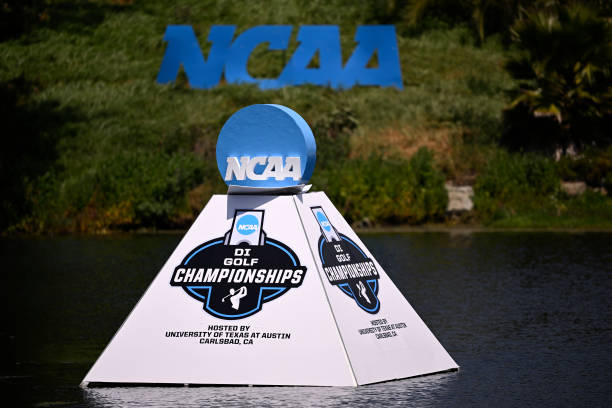Introduction to NCAA
The National Collegiate Athletic Association (NCAA) is the primary governing body for college athletics in the United States. Established in 1906, the NCAA oversees a wide range of sports competitions for student-athletes across various divisions, with Division I being the most competitive. NCAA Division I schools are known for their rigorous athletic programs, and they often attract the best high school talent in the country. Among the significant aspects of participating in NCAA Division I athletics is the opportunity to earn sports scholarships, which can significantly impact an athlete’s educational and athletic career.
Types of NCAA Division I Scholarships
NCAA Division I institutions offer several types of scholarships to student-athletes, primarily categorized as full and partial scholarships.
Full Scholarships
A full scholarship covers the entire cost of attendance at the university, which includes tuition, fees, room and board, and textbooks. This type of scholarship is highly competitive and is typically awarded to elite athletes who are expected to contribute significantly to their team’s success. Full scholarships are most commonly associated with sports that generate substantial revenue, such as football and basketball.
Partial Scholarships
Partial scholarships cover only a portion of the total cost of attendance. These can be awarded in any amount, allowing coaches to distribute funds among multiple athletes. In sports with equivalency scholarships (like baseball and track), a coach can divide the available scholarship money among several athletes, giving more students the chance to compete at the college level. This approach allows programs to build deeper rosters while still providing financial assistance to talented athletes.
Equivalency Scholarships
Equivalency scholarships are a unique aspect of NCAA Division I sports. In this system, a program may have a specific limit on the total amount of scholarship funds it can distribute, allowing coaches to allocate that money across multiple athletes. This system is commonly used in sports like baseball, soccer, and gymnastics. The flexibility of equivalency scholarships means that coaches can offer partial funding to a greater number of athletes, thus broadening opportunities for many student-athletes.
Eligibility Requirements
To be eligible for NCAA Division I scholarships, student-athletes must meet specific academic and athletic criteria outlined by the NCAA.
Academic Requirements
The NCAA has established minimum academic standards that athletes must achieve to qualify for scholarships. These include:
- Core Course Requirements: Student-athletes must complete a specified number of core courses during their high school education. This typically includes courses in English, math, science, and social studies.
- Minimum GPA: Athletes must maintain a minimum grade point average (GPA) to be eligible. This GPA varies depending on the athlete’s standardized test scores.
- Standardized Test Scores: Athletes must achieve acceptable scores on the SAT or ACT. The NCAA uses a sliding scale that correlates GPA with test scores to determine eligibility.
Athletic Requirements
In addition to academic qualifications, student-athletes must demonstrate exceptional athletic talent. Coaches often scout high school competitions, tournaments, and showcases to identify potential recruits. Performance in these events can be crucial for earning scholarship offers.
The Recruiting Process
The recruiting process for NCAA Division I sports is highly competitive and often begins during an athlete’s junior year of high school. Understanding this process can greatly enhance an athlete’s chances of securing a scholarship.
Initial Contact
Coaches typically begin their recruitment efforts by identifying potential talent through scouting and attending high school games. Once a coach identifies a prospective athlete, they may reach out via email, phone calls, or in-person visits. Athletes are encouraged to create highlight reels and maintain an online presence to showcase their skills.
Official Visits
Once a coach expresses interest, they may invite the athlete for an official visit to the campus. This visit allows the athlete to meet the coaching staff, tour the facilities, and experience the campus lifestyle. Official visits are also an opportunity for athletes to ask questions about the program, scholarship offers, and expectations.
National Letter of Intent (NLI)
If an athlete receives a scholarship offer, they may sign a National Letter of Intent (NLI). This binding agreement commits the athlete to attend that institution for at least one academic year, in exchange for the scholarship. Signing an NLI is a significant step in securing a spot on the team.
Impact of Scholarships
Receiving an NCAA Division I sports scholarship can have a profound effect on a student-athlete’s life. Beyond the financial benefits, scholarships provide access to high-quality education, athletic training, and career development opportunities.
Education and Career Advancement
Scholarships enable athletes to pursue higher education while competing at a high level. Many student-athletes leverage their college experience to advance their careers, whether in sports or other fields. The discipline and teamwork skills developed through athletics often translate well into professional environments.
Lifelong Connections
Participating in NCAA sports also fosters lifelong relationships. The camaraderie built among teammates and coaching staff creates a supportive network that can extend beyond college, offering both personal and professional connections.
Conclusion
NCAA Division I sports scholarships are a key component of the college athletic landscape, providing opportunities for talented athletes to pursue their academic and athletic goals. Understanding the types of scholarships, eligibility requirements, and the recruiting process is crucial for aspiring student-athletes. The benefits of receiving a scholarship extend far beyond financial assistance; they pave the way for educational advancement, personal growth, and lifelong connections in the world of sports and beyond. For many, these scholarships represent not just a chance to play at the collegiate level, but a pathway to a brighter future.
